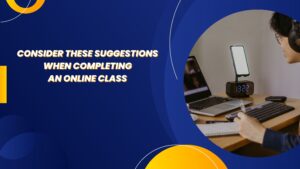ProctorU vs. Traditional Exam Proctoring: Which Is More Effective?
- 1 The Role of Exam Proctoring in Education
- 2 Understanding ProctorU: An Online Proctoring Solution
- 3 The Effectiveness of ProctorU: Advantages and Benefits
- 4 Traditional Exam Proctoring Methods
- 4.1 In-Person Proctors:
- 4.2 Closed-Circuit Cameras:
- 4.3 Strict Exam Rules:
- 4.4 Physical Security Measures:
- 5 Comparing ProctorU to Traditional Exam Proctoring: A Deeper Look
- 6 Cheating on ProctorU: Challenges and Concerns
- 7 Conclusion
In the ever-evolving landscape of education, the need for effective exam-proctoring methods has become increasingly crucial, especially with the rise of online learning. The debate over ProctorU, an online proctoring service, versus traditional exam proctoring methods is a topic of great interest among educators and institutions alike. This article delves into the key considerations surrounding these two approaches, assessing their effectiveness while addressing the issue of cheating on ProctorU.
The Role of Exam Proctoring in Education
Proctoring exams is a fundamental aspect of education aimed at ensuring the integrity of the assessment process. It involves monitoring students during examinations to deter cheating and maintain a fair testing environment. Traditional exam proctoring typically takes place in physical settings, such as classrooms or testing centers, with trained proctors overseeing the process. In contrast, online proctoring services like ProctorU extend this oversight to virtual environments, allowing students to take exams remotely.
Understanding ProctorU: An Online Proctoring Solution
ProctorU is a prominent online proctoring service that offers institutions and educators a way to monitor students’ behavior during online exams. The service employs trained proctors who use webcams, microphones, and screen recording to observe students remotely in real-time. While ProctorU aims to provide a secure online exam environment, its effectiveness and ethical implications have sparked debate.
The Effectiveness of ProctorU: Advantages and Benefits
ProctorU, as an online proctoring service, offers a range of advantages that contribute to its effectiveness in ensuring the integrity of online exams, especially in the context of remote and online learning.
Proponents of ProctorU point to these key benefits as reasons for its growing popularity among educational institutions:
- Deterrence of Cheating: One of the foremost advantages of ProctorU is its capacity to serve as a potent deterrent against cheating during online exams. The presence of real-time monitoring, combined with the awareness that proctors are observing their every move, can effectively discourage students from engaging in dishonest behavior. This psychological deterrent factor plays a crucial role in upholding academic integrity.
- ID Verification: ProctorU employs stringent identity verification measures to establish beyond a doubt that the person taking the exam is indeed the enrolled student. By verifying government-issued identification documents, facial recognition, and other authentication methods, ProctorU significantly reduces the risk of impersonation or the fraudulent representation of another individual.
- Screen Recording: A critical component of ProctorU’s effectiveness lies in its ability to capture students’ screens during exams. This feature acts as a robust defense against cheating by making it exceptionally challenging for students to access external resources or collaborate with others without detection. The screen recording function acts as an impartial observer, documenting the entirety of the exam process for later review, thus enhancing the reliability of the assessment.
- Accessibility: ProctorU places a strong emphasis on accessibility, ensuring that all students have an equal opportunity to participate in exams. The service offers accommodations for students with disabilities, guaranteeing that the assessment process is inclusive and that no student is disadvantaged due to their individual needs. This commitment to accessibility aligns with the principles of fairness and equity in education.
- Flexibility: ProctorU’s online proctoring model provides students with the flexibility to take exams from the comfort of their own homes. This eliminates the logistical challenges associated with traveling to a physical testing center, particularly for remote learners or those with busy schedules. The flexibility offered by ProctorU enhances accessibility and convenience for students, making it a preferred choice for many.
- Reduced Administrative Burden: Another significant advantage of ProctorU is its capacity to alleviate the administrative burden on educational institutions, educators, and staff. By outsourcing exam proctoring to a specialized service provider like ProctorU, institutions can streamline the examination process. This, in turn, allows educators to focus more on their core teaching responsibilities, curriculum development, and providing a quality educational experience to students.
Traditional Exam Proctoring Methods
Traditional exam proctoring methods are well-established practices that rely on in-person supervision and control within a physical testing environment. These methods have been employed for decades to maintain the integrity of examinations and prevent cheating. Here’s an expanded look at common traditional exam proctoring methods:
In-Person Proctors:
Trained proctors, often referred to as invigilators, play a pivotal role in overseeing exams in traditional settings. These proctors are typically responsible for:
Distributing exam materials: In-person proctors ensure that each student receives the correct exam paper or access to the digital exam platform.
Monitoring student conduct: Proctors observe students throughout the exam to ensure they follow exam rules and guidelines. They watch for any signs of cheating or suspicious behavior.
Clarifying instructions: Proctors are available to answer questions and provide clarifications on exam instructions, ensuring that students understand what is expected of them.
Enforcing time limits: Proctors keep track of time and announce when students must stop working on their exams.
Closed-Circuit Cameras:
To enhance the monitoring process, many traditional exam proctoring venues employ closed-circuit cameras. These cameras are strategically placed in testing rooms to capture video footage of the entire exam session.
The use of cameras serves several purposes:
Deterrence: The presence of cameras acts as a deterrent, discouraging students from attempting to cheat during exams.
Documentation: Video footage can be used as evidence in cases of suspected misconduct, providing a visual record of what occurred during the exam.
Oversight: Proctors can also review the camera footage to identify any irregularities or cheating attempts that may have gone unnoticed during the live exam session.
Strict Exam Rules:
Maintaining a controlled and fair testing environment is crucial in traditional exam proctoring. To achieve this, institutions enforce strict exam rules, which may include:
Seating arrangements: Students are often assigned specific seats to prevent communication or sharing of information during exams.
Personal items restrictions: Students are typically required to stow away personal belongings such as bags, cell phones, and notes to eliminate potential sources of cheating.
Prohibition of communication: Talking or communicating with other students during the exam is strictly prohibited to prevent collaboration or cheating.
No access to external resources: Students are not allowed access to external materials or digital devices that could aid in cheating.
Physical Security Measures:
Ensuring the security of exam materials is a priority in traditional exam proctoring. To prevent unauthorized access and cheating, physical security measures are implemented:
Secure storage of exam papers: Exam papers are securely stored before distribution to prevent tampering or leaks.
Controlled entry and exit: Students are monitored when entering and exiting the testing venue to prevent unauthorized access or cheating attempts.
Strict identification checks: Students are required to present valid identification to verify their identity before taking the exam. This measure helps prevent impersonation and cheating.
Traditional exam proctoring methods are considered effective in maintaining the integrity of assessments. However, they do come with certain limitations, such as the need for physical testing centers, the cost of hiring proctors, and the potential for human error in monitoring. As a result, institutions are exploring alternative methods, including online proctoring services like ProctorU, to address these challenges while still upholding exam integrity.
Comparing ProctorU to Traditional Exam Proctoring: A Deeper Look
Now, let’s dive deeper into the key considerations when comparing ProctorU, an online proctoring service, to traditional exam proctoring methods. This in-depth exploration will help us assess the effectiveness of each approach and their respective advantages and drawbacks.
- Deterrence of Cheating: Both ProctorU and traditional proctoring methods serve as effective deterrents to cheating. The mere presence of a proctor, whether in-person or virtual, can create a psychological barrier that discourages dishonest behavior. Students are less likely to attempt cheating when they know they are being monitored closely.
- ID Verification: One area where ProctorU stands out is its stringent ID verification measures. ProctorU employs advanced technology to confirm the identity of the test-taker. This includes verifying government-issued IDs, comparing photos, and using biometric facial recognition. Traditional proctoring methods may rely on less sophisticated ID checks, making impersonation and identity fraud more feasible.
- Screen Recording vs. In-Person Supervision: ProctorU employs screen recording as a digital counterpart to in-person supervision. This technology captures everything happening on the test-taker’s computer screen, making it difficult for students to access external resources or collaborate with others without detection. In contrast, traditional proctors provide physical supervision but may not have a direct view of the student’s computer screen. However, in-person proctors can intervene immediately if they observe suspicious behavior, while ProctorU proctors can only alert institutions to potential issues.
- Accessibility and Convenience: ProctorU offers significant advantages in terms of accessibility and convenience, particularly for remote learners and non-traditional students. Students can take exams from the comfort of their own homes or locations of their choice, eliminating the need for travel to a physical testing center. This flexibility is especially beneficial for those with busy schedules or mobility challenges. Traditional exam proctoring, often conducted in physical testing centers or classrooms, may be less accommodating in this regard.
- Privacy Concerns: A noteworthy concern associated with ProctorU and similar online proctoring services is the issue of privacy. Virtual monitoring raises apprehensions among students who may feel uncomfortable with the level of intrusion into their personal space. Being constantly watched through webcams and having their screens recorded can be perceived as invasive. In contrast, traditional proctoring methods may be seen as less intrusive, as they do not involve continuous surveillance via webcams.
- Cost: It’s essential to consider the cost aspect when comparing ProctorU to traditional proctoring methods. ProctorU is a service that comes with associated fees, and these costs may be borne by educational institutions or passed on to students. This could potentially create financial barriers to education for some students. On the other hand, traditional proctoring methods may have lower associated costs, as they often involve on-site staffing and infrastructure already in place.
- Administrative Burden: ProctorU can significantly reduce the administrative burden on educational institutions. It streamlines the proctoring process, as institutions can outsource the service and rely on ProctorU’s trained proctors to handle monitoring and recording. This allows educators to concentrate more on teaching and curriculum development. In contrast, traditional exam proctoring methods require the management of on-site staffing, scheduling, and logistical arrangements, which can be more labor-intensive for educational institutions.
Cheating on ProctorU: Challenges and Concerns
While ProctorU aims to maintain exam integrity, it is not immune to potential challenges and concerns, including attempts to “cheat on ProctorU”:
- Privacy Concerns: Constant surveillance raises privacy concerns among students who may feel uncomfortable with the level of intrusion.
- Technical Issues: Technical glitches, such as poor internet connectivity or software problems, can disrupt the exam-taking experience and cause stress for both students and educators.
- Impersonation Risk: Despite ID verification measures, there is a risk of students hiring someone else to take their exams or using sophisticated methods to impersonate themselves during the assessment.
- Bias and Cultural Sensitivity: Human proctors employed by ProctorU may possess unconscious biases that could affect their judgment during monitoring. Additionally, cultural differences in behavior and communication could lead to misunderstandings or misinterpretations during the exam.
- Stress and Anxiety: The knowledge of constant monitoring can create stress and anxiety for students, potentially affecting their exam performance.
- Lack of Personal Interaction: Online proctoring services like ProctorU lack the personal interaction that students may receive in traditional, in-person exams, where they can ask clarifying questions or seek assistance from an instructor.
Conclusion
The effectiveness of ProctorU versus traditional exam proctoring methods depends on a variety of factors, including the specific needs of educational institutions, the preferences of students, and ethical considerations. While ProctorU offers advantages such as rigorous ID verification and flexibility, it also raises concerns about privacy, technical issues, and bias.
Educational institutions must carefully weigh the pros and cons of both approaches and consider alternative assessment methods when appropriate. Ultimately, the choice between ProctorU and traditional exam proctoring should prioritize the preservation of academic integrity while providing a fair and supportive testing environment for all students.

















